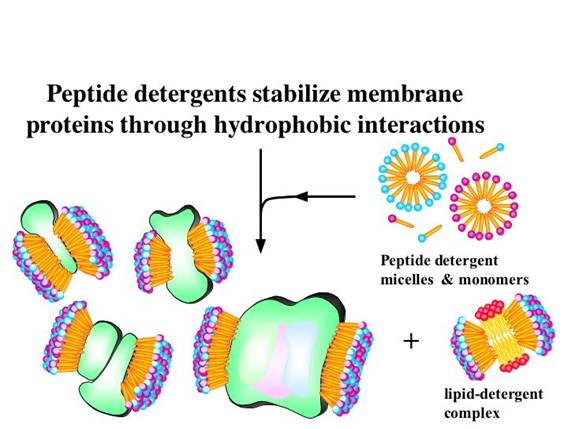According to Molecular And Cellular Biology (Stephen L. Wolfe),
Membranes disperse almost instantaneously if exposed to a nonpolar environment or to detergents, which are amphipathic molecules that can form a hydrophilic coat around the hydrophobic portions of membrane lipids and proteins in water solutions.
This might be a stupid question but... if detergents can 'form coats around hydrophobic portions' of membrane-suspended molecules, they must, somehow get in the hydrophobic membrane interior... right?
How do they get in the membrane interior? Do they form clusters like endocytic vesicles? What happens after they form hydrophilic coats around hydrophobic molecule regions?



